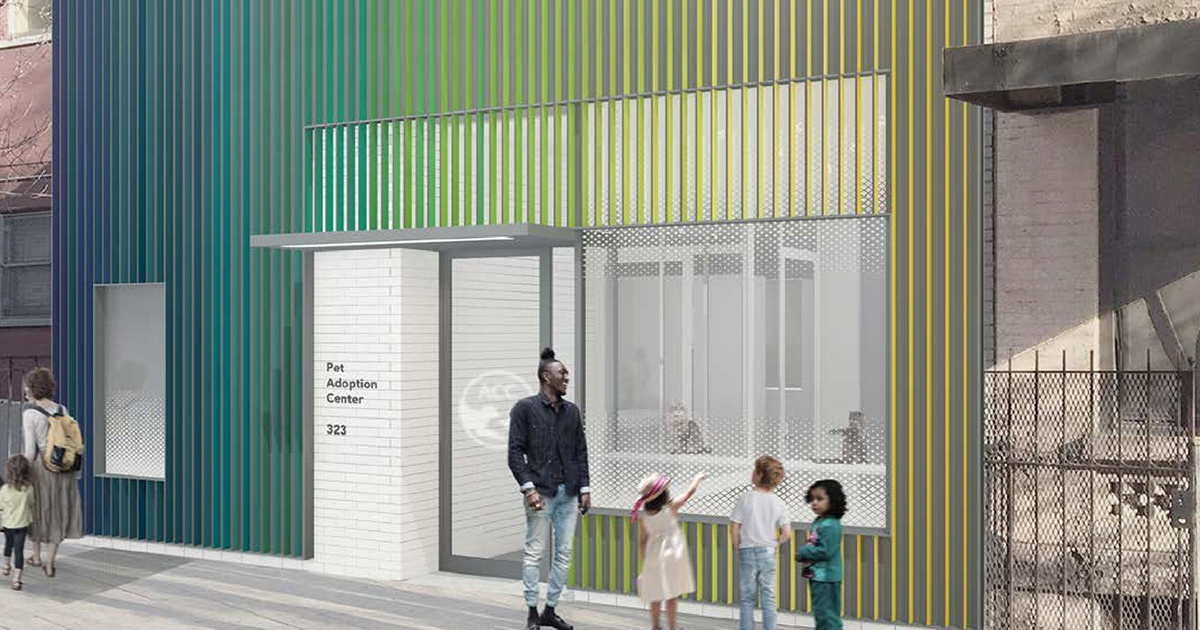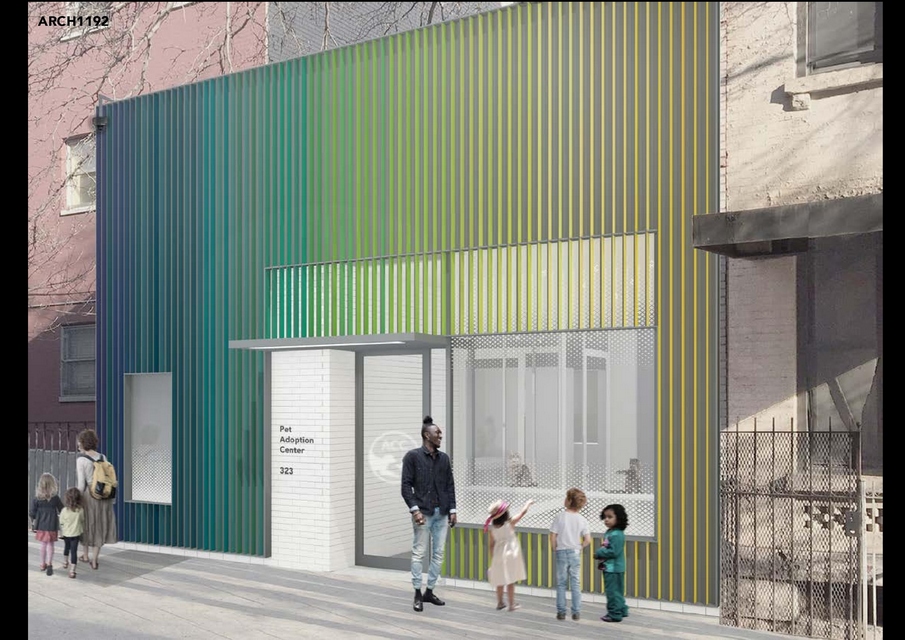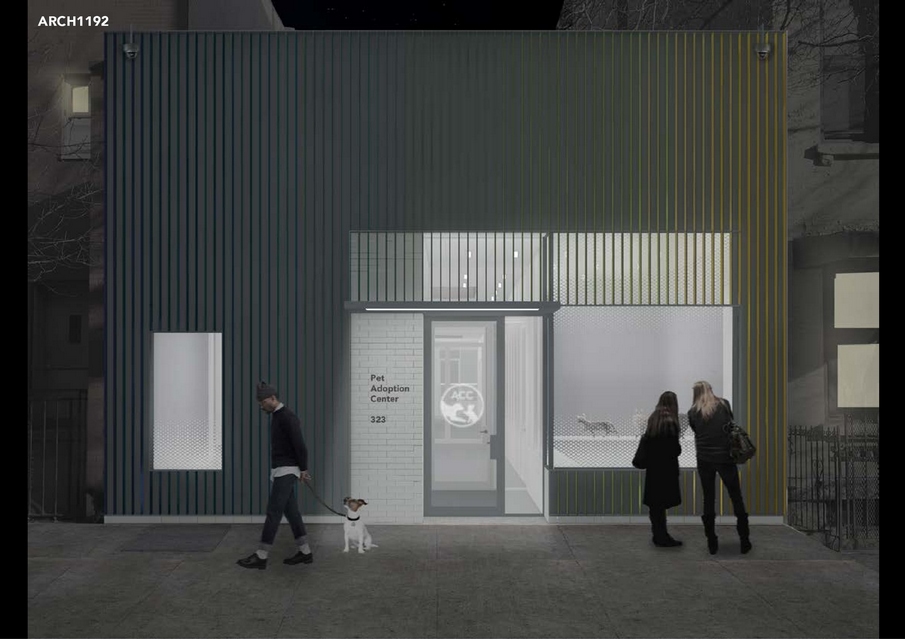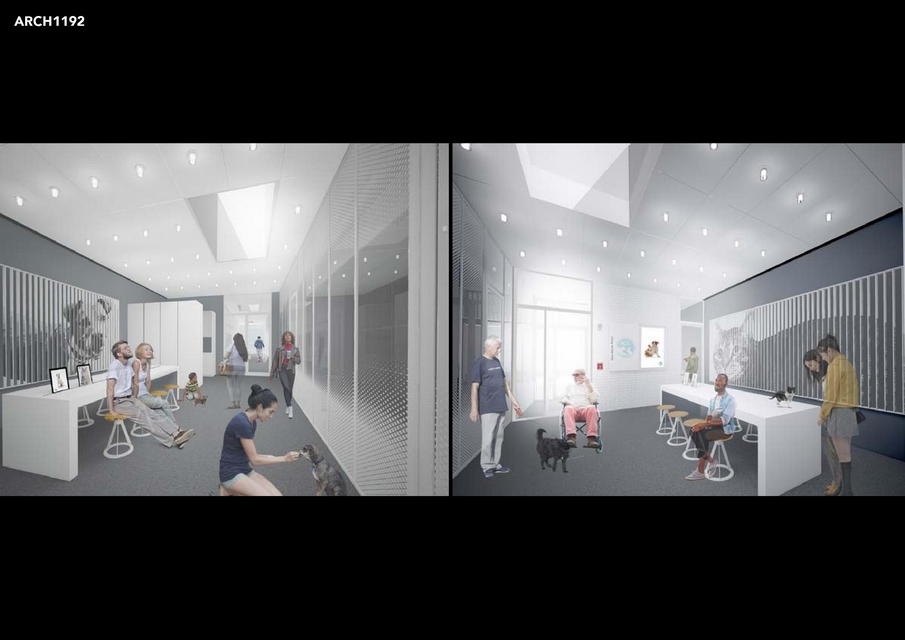Manhattan Pet Adoption Center || Studio Joseph || Architect of the Year Awards 2020
Studio Joseph: Runner-Up of Architect of the Year Awards 2020. Located on East 109th and 110th Streets in East Harlem, the new pet adoption center accommodates dogs, cats, and rabbits in a welcoming environment. While prioritizing that animal health and safety, The Center is a lively and welcoming building that provides a community amenity. Zoning restrictions prohibit structural modifications; therefore, the design maintains the existing façade apertures and roof openings, employing a new rain screen. On 109th street, a monumental new window replaces an existing garage door providing a twenty-four-hour view into a cat colony. Public interaction with the animals creates positive outcomes for both the animals and their adopting families. There is natural light and views to every space. The design celebrates the active participation of this community facility in a residential neighborhood.
On the façade, the glass is screened from solar exposure by a fritted gradient on the glazing that is graduated to allow views in and out. The addition of the screen preserves the existing building skin while enlivening the facade with a three-dimensional character and the unexpectedly nuanced addition of color. Hues shift subtly from yellow tones to Greens to Blues over the perpendicular facing 3″-deep steel fins. Optically, there is a flicker effect as one walks down the street, while from the opposing side of the street, the color is more subdued against the grey background. The existing brick and any required infill or repairs are painted white. The north facade’s existing garage door aperture is infilled with a large window to bring light to the dog “meet and greet” area and interior dog kennels.
The mechanical unit, placed to the west side of the skylights, is invisible from eye-level with all equipment above grade. The building includes a digital monitor that allows for the distribution of information. LEED Silver is the current goal for the project. Some environmentally forward-thinking features include re-use of existing infrastructure; access to daylight/views for both animals and visitors; new energy efficient skylights; the addition of insulation to walls and roof; and the use of efficient mechanical systems. The Center has recycling procedures, optimizing waste management.
Respecting the local context, The Center is both iconic and playful. With the inventive use of color and broad open views into and from the facility, the building is a welcoming part of the streetscape that reflects The Center’s mission to provide to the public without barrier and provide a sense of community.
Firm || Studio Joseph
Project Name || Manhattan Pet Adoption Center
Architect || Wendy Evans Joseph
Architect of the Year Award Category || Public Building Concept
Project Location || New York
Team || Wendy Evans Joseph, Principal-in-Charge; Rafael Herrin-Ferri, Architect; Alexios Bacolas, Project Manager; Connie W, Associate; Chris Raeburn, Senior Designer; Shuo Yang, Designer; Derek Lee, Designer; Emma Chen, Designer
Country || United States
Photography ©Credit || ©Studio Joseph
Studio Joseph is a small studio comprised of diverse individuals from different nations. We revile bigotry, social injustice, and police brutality. As exhibition designers, we have the privilege of helping amplify voices that are silenced. As architects, we have the power to advance the design and presence of public buildings in underserved communities. While we are proud of our work, we realize that we can do more, and we pledge to use our skills and creativity to make a more profound change in the memory of George Floyd and others in the black community who have been murdered by the hands of those put in power to protect them. Education, empathy, and equity are at the forefront of our studio’s philosophy, and in that regard, we have made a specific action plan that includes:
Reviewing our internal policies and recommitting to hiring practices that prioritize inclusion.
Working with cultural and public institutions whose commitment to social justice mirrors our own.
Collaborating with colleagues whose work in community engagement enables us to develop assets and design strategies that empower individuals to have meaningful discussions about systemic racism in America.
And, educating ourselves as architects by delving into the Architectural League’s Race and Architecture recommended reading. If you are part of the architecture community, we invite you to explore these resources so that we may begin a deeper discussion.We are here to listen and collaborate on initiatives for making our communities and our world a better place for everyone. We look forward to your feedback and insight.











